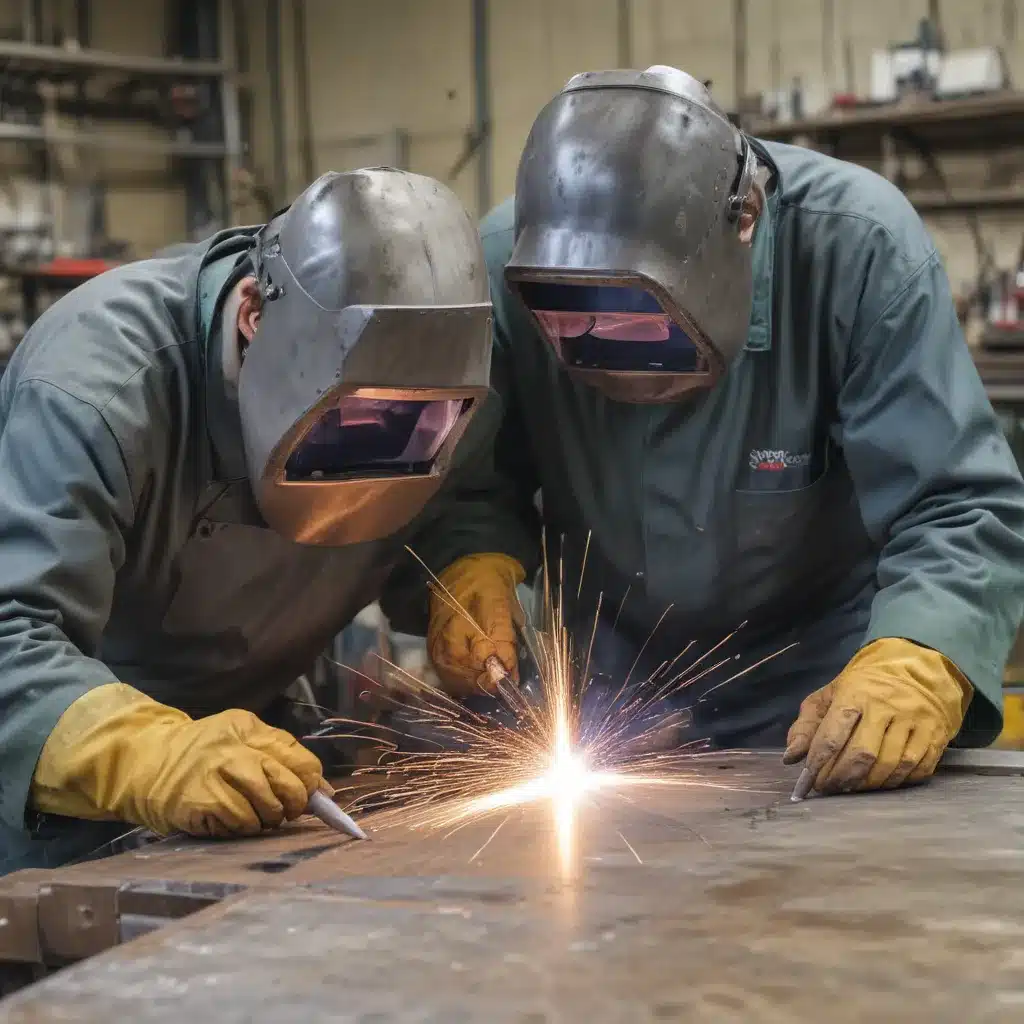
The Quest for Stronger, Tougher Welds
As a welding enthusiast and professional, I’ve always been fascinated by the intricate dance between metallurgy and engineering. The art of welding, where molten metal meets mighty machinery, is a captivating realm where the very foundations of our modern world are forged. And at the heart of this realm lies a quest – a quest to create welds that are not just strong, but downright indestructible.
You see, when it comes to welding, strength is only half the battle. Toughness, my friends, is the true measure of a weld’s mettle. Toughness, the ability to withstand impact and resist fracture, is the unsung hero that keeps our bridges standing, our ships sailing, and our heavy equipment rumbling along. And that’s where chemistry comes into play – the secret sauce that can transform a good weld into a great one.
Unraveling the Toughness Conundrum
So, what exactly is this elusive quality known as toughness? Well, it’s a multifaceted beast, a delicate balance of microstructural harmony and chemical composition. Think of it like a symphony – each element, each alloying addition, plays a crucial role in creating the perfect, resonant whole.
At the heart of weld metal toughness lies the microstructure – the intricate arrangement of grains, phases, and defects that make up the weld’s very fabric. Ah, but here’s the catch: this microstructure is heavily influenced by the chemistry of the welding consumables, the parent metal, and even the atmosphere in which the weld is made.
Mastering the Art of Weld Metal Chemistry
Now, I know what you’re thinking: “Chemistry? Really? Isn’t welding supposed to be all about the sparks and the molten metal?” Well, my friend, you couldn’t be more wrong. The chemistry of the weld metal is the unsung hero, the maestro that conducts the entire symphony of a strong, tough weld.
Let’s dive in, shall we? First up, the role of carbon. Carbon, that ubiquitous element, is the backbone of steel – but too much of a good thing can be detrimental to weld metal toughness. See, carbon likes to team up with other elements, forming hard, brittle compounds that can make the weld more prone to cracking under stress.
But fear not, for there are ways to tame the carbon beast. Alloying elements like manganese, chromium, and nickel can step in, creating a more well-rounded, ductile microstructure that can weather the storm of impact and fatigue.
Striking the Perfect Chemical Balance
And let’s not forget about those pesky impurities – elements like sulfur and phosphorus that can sneak into the weld, wreaking havoc on its properties. These little troublemakers can segregate at grain boundaries, creating weak spots that just beg to be exploited by the forces of fracture.
But here’s where the welding wizard’s bag of tricks comes in handy. By carefully controlling the levels of these impurities, and perhaps even introducing elements like titanium or zirconium to tie them up, we can create a weld metal that laughs in the face of adversity.
The Power of Microalloying
And now, the real magic – microalloying. These tiny additions, measured in parts per million, can have a disproportionately huge impact on weld metal toughness. Elements like niobium, vanadium, and titanium can refine the grain structure, promote the formation of beneficial phases, and even pin down those pesky dislocations that can lead to premature failure.
It’s like having a secret weapon in your welding arsenal – a few well-placed microalloying additions can transform a garden-variety weld into a veritable fortress of strength and toughness. And the best part? These modifications can be tailored to the specific application, ensuring that the weld is perfectly suited to its task.
Putting It All Together
So, there you have it – the chemical secrets behind creating tough, resilient weld metal. It’s a delicate dance, to be sure, but one that’s well worth mastering. After all, who doesn’t love the idea of a weld that can withstand the harshest of environments, the most punishing of loads?
And you know what they say, “with great toughness comes great responsibility.” As welding professionals, it’s our duty to push the boundaries of what’s possible, to create welds that don’t just meet the minimum requirements, but exceed them with flying colors.
So, the next time you’re faced with a welding challenge, don’t just think about the sparks and the molten metal – think about the chemistry, the microstructure, the delicate balance of elements that can turn a good weld into a great one. Because when it comes to welding, toughness is the name of the game, and chemistry is the ace up our sleeve.
And if you’re looking for a team of welding experts who know how to harness the power of chemistry to create truly impressive welds, be sure to check out Corr Connect. Their commitment to innovation and excellence in welding is second to none.
